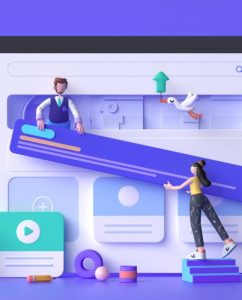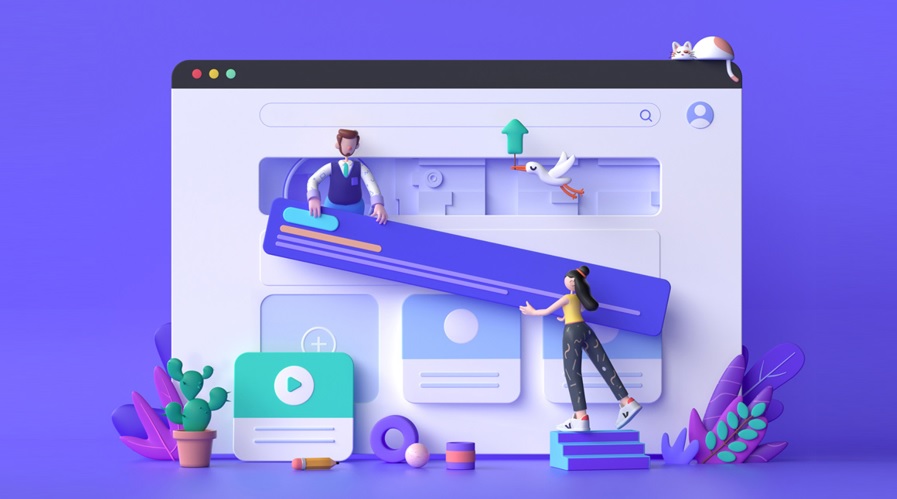Product designers are in charge of the look and feel of any product, especially websites and software products. It’s difficult to hire a product designer if you’re not sure what he or she does, so here are 10 UX deliverables that you can ask for when you get product designers for hire.
1. Wireframes
Wireframes are one of the most important UX deliverables because they help you communicate the structure of your app or website, and how users will interact with it. They’re also helpful for getting feedback from stakeholders early on in the process. This is why wireframes should be at the top of any UX designer’s list. It’s easy to get stuck in the weeds when working on a project, but if you take time to draw out a wireframe beforehand, then there’s less room for ambiguity when finalizing details later on. And even if you don’t have a lot of experience designing wireframes (or maybe none at all), no worries!
2. Flow diagrams
A flow diagram is a simple way to map out the steps your users will take to complete a task. By creating a flow diagram, you can ensure that your product is easy to use and understand. Plus, flow diagrams can help you spot potential areas for improvement. This diagram may not be pretty, but it’s one of the most important tools in any designer’s toolkit. It helps designers pinpoint problems with their products and suggests solutions on how to improve them before they’re released into the wild.
3. Mockups
A mockup is a prototype of your product that allows you to test out the look, feel, and functionality of your design before committing to code. This is an important step in the design process because it allows you to make changes early on, saving you time and money in the long run. This is an important step in the design process because it allows you to make changes early on, saving you time and money in the long run. It also gives you an opportunity to get feedback from others about what they think about the user experience. The more people who see your mockups, the better idea they will have about how users will react to them.
4. Personas
Personas are one of the most important UX deliverables, as they help you understand your users and their needs. By creating personas, you can ensure that your product is designed with your users in mind. This is a popular practice among user experience designers and content strategists because it helps identify which features should be prioritized and what will resonate best with your target audience. The information gathered from personas also helps shape content strategies, which leads to more effective user experiences for different types of people.
5. Scenarios
Scenarios are a fantastic way to get a handle on how users will interact with your product. They help you anticipate user needs and think through the user experience. Plus, they’re just plain fun to write! The Scenarios document is often one of the first documents created in a new project, followed by User Flows. From there, other deliverables can be developed that incorporate aspects of interaction such as Task Analysis and Personas. These documents provide rich information about what users do and don’t like when interacting with products.
6. Low fidelity prototypes
Prototypes are an essential part of the design process, allowing you to test your ideas before committing to a final design. Low fidelity prototypes are quick and easy to create, and can be used to test everything from user flow to interaction design. This is a perfect solution for when you need to quickly demonstrate that something works before investing too much time into it. It’s also worth noting that low fidelity prototypes allow for changes at any point in the development process with minimal effort. You may find yourself making major revisions after going through this step and finding out what your users want or don’t want from their experience, or adding new features later on in the project without needing to start over entirely.
7. User stories with acceptance criteria
This deliverable is a very important step because it is the first time you get to see what the user interface will look like and can validate that this is what the user needs. User stories are also useful for conducting usability testing because you can write down what tests need to be conducted. There are many different types of user stories, including high-level, low-level, happy path, exploratory, and epics.
8. Full fidelity prototypes
A full fidelity prototype is an interactive simulation of your product that looks and feels like the real thing. Full fidelity prototypes are essential for testing user flows and interactions. They can be created using a variety of tools, including Invision, Sketch, and Adobe XD. This type of prototype may take more time to create than wireframes or paper prototypes, but it will provide more accurate results from usability tests because users interact with it as they would with the finished product. And if you’re going to have other team members work on your project after you’ve gone off to pursue other interests (or before), having a full fidelity prototype will make their job easier.
9. Reports / user manuals (walkthroughs, handbooks, etc.)
The Reports/user manuals document will help you take a deep dive into the usability of your product. Use this to see if there are any features that are not intuitive or used often. It’s also a good idea to add things like contact information and support so users know where to turn if they have questions. You can create multiple documents for different aspects of your product: an overview, troubleshooting, guidelines, etc.
10. Usability tests
User testing is one of the most important things you can do to ensure your product is successful. By sitting down with users and having them try to complete tasks using your product, you can get invaluable feedback about what works and what doesn’t. Plus, it’s a great way to catch any potential issues before your product goes live.
Conclusion
In conclusion, a good UX delivers products that are user-friendly, easy to use, and solve the needs of its customers. The 10 items discussed above are important to keep in mind when you’re going to hire ux designer. Each deliverable is an essential tool in the designer’s toolkit, that guarantees effective communication with the audience.



